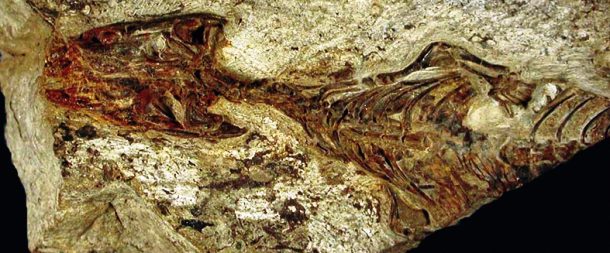A newly identified reptilian fossil has pushed back the phylogenetic (evolutionary) family tree of Squamata [the dominant order of living reptiles, comprising lizards, snakes, and amphisbaenians (mostly limbless lizards that resemble worms)] by 75 million years. Megachirella wachtleri has been identified as a 240-million-year-old squamate, casting it as the oldest known lizard fossil in the world. Initially discovered in the Italian Alps in the early 2000s, this fossil has been reexamined using the latest imaging techniques, including three-dimensional computerized tomography (CT) scanning methods. Combining the results of the CT scans with more precise knowledge about the phylogeny (genealogical history) of lizards and snakes, investigators have concluded that Megachirella is approximately 75 million years older than any previously known squamate fossil. See also: Animal evolution; Computerized tomography; Fossil; Organic evolution; Paleontology; Phylogeny; Reptilia; Squamata

About 240 million years ago in the Early to Middle Triassic period, Megachirella lizards lived on the shores of a group of islands with lush vegetation. Today, these former islands comprise the Dolomites mountain range in the Italian Alps. Based on analyses of the Megachirella specimen, which is a partial skeletal fossil measuring 7.5 cm (3 in.) in length and consisting of the reptile's upper body (including the head, palate, shoulder, upper limbs, and belly), paleontologists estimate that the full size of the lizard would have been 25–30 cm (10–12 in.) in length. Investigators also compared the Megachirella skeleton with the skeletal remains of other ancient squamates and reanalyzed the genetic data of living lizards and snakes. By doing so, the scientists fine-tuned the phylogenetic tree of early squamates, determining that geckos (and not iguanas) are the world's oldest surviving lizards. Furthermore, the researchers concluded that squamates arose prior to the end-Permian mass extinction that occurred approximately 252 million years ago. This extinction episode was the most devastating global extinction event ever recorded, wiping out up to 95% of all marine species and 75% of all terrestrial species on Earth. Thus, squamates were among the few lineages to survive this catastrophic event, indicating that they possessed features that made these creatures capable of remarkable adaptability. See also: Extinction; Extinction (paleontology); Gecko; Mass extinctions; Paleobiodiversity; Paleoecology; Permian; Triassic
Still, paleontologists have much to learn about the early evolution of the squamate group. A 75-million-year gap remains between the Megachirella specimen and the next-oldest lizard fossil, so the phylogenetic tree of squamates will likely be revised further. Therefore, despite the preponderance of snakes and lizards in the modern world, the past history of these creatures holds mysteries that have yet to be revealed. See also: Evolution and interrelationships of lizards and snakes; Snake evolution





